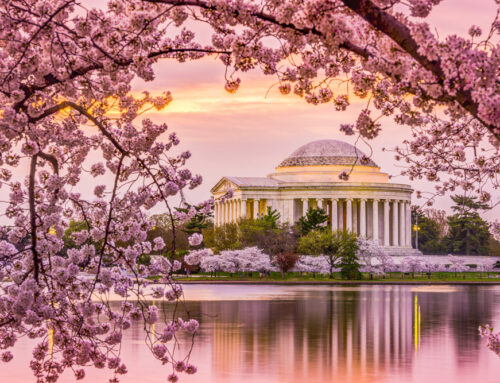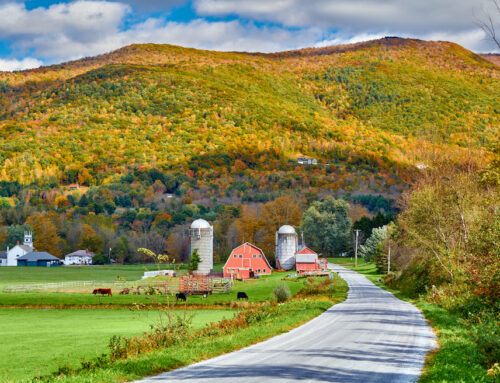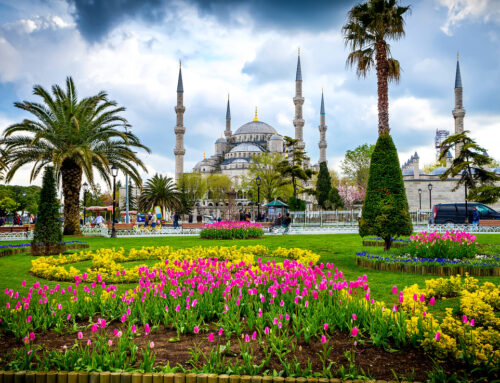10 Reasons Art Enthusiasts Love San Diego
Love Art? Then you’ll love the stunning public art displays in San Diego.
San Diego may be a city that’s known for its sun, sand and surf, but visitors shouldn’t overlook the city’s stunning public art pieces, bronze statues and sculpture gardens – especially because many of them can be found in some of the city’s top destinations. So whether you’re on your way to Balboa Park or the San Diego Convention Center, Little Italy or the Gaslamp Quarter, be sure to swing by these beautiful and unique PDAs – public displays of art.
- Crab Carillon – Don’t forget your pencil or stick or any other object that will allow you to play Crab Carillon as you walk over the 25th Street Bridge, which spans the Martin Luther King Jr. Freeway (California State Route 94). The 2003 piece, by artist Roman de Salvo and composer Joseph Waters, is an interactive art installation that tickles more than the visual sense. Passers-by can play the chimes, which are built into a fence, by running a stick or metal rod over them as they walk past. The melody is a palindrome, meaning it plays the same song both forward and backward, so the art installation sounds beautiful no matter which way you play it.
- Okeanos – Public art is often controversial, but perhaps the city’s most contentious piece of public art is Okeanos by artist William Tucker. The abstract bronze sculpture was originally commissioned in 1987 for $200,000 by a group of donors to honor Frank J. Dixon, who was director of Scripps Research Institute for 25 years. The problem? Many people thought the piece of art actually resembled, well, a piece of something else. Tucker named the 13-foot sculpture after the Greek god of rivers and oceans because, he said, the form was intended to resemble a wave. Okeanos sat in front of Scripps Green Hospital on North Torrey Pines Road from 1988 until 2001, when philanthropist Edythe H. Scripps paid $40,000 to relocate it to a less-prominent site on the east side of the Scripps Research Institute, on the corner of John Jay Hopkins Drive and General Atomics Court.
- That A Way – He’s a dapper man. Dressed to the nines in a crisp, gray suit, wearing black shoes and holding a magazine, That A Way can be a bit disconcerting because, well, the bronze sculpture looks so darn real. That A Way leans jauntily against the front of The Sofia Hotel near San Diego’s Gaslamp Quarter, holding a full-color copy of San Diego Magazine with one hand and pointing nonchalantly to the Sofia Hotel’s entrance with the other. In July 2008, the mayor, former governor and other officials attended a ceremony to dedicate the bronze sculpture by American artist Seward Johnson who is best known for his realistic sculptures that depict people in everyday activities. Johnson’s That A Way was dedicated to honor the redevelopment and restoration of the historic Sofia Hotel. Just don’t make the mistake of asking That A Way for directions to the nearby Gaslamp Quarter.
- Bear – When you’re strolling along the University of California, San Diego campus, Bear stops you in your tracks. There it is: a giant, stuffed teddy bear, except instead of being soft and cuddly, artist Tim Hawkinson’s piece is made from enormous, weathered, granite boulders. The sculpture on the University of California, San Diego campus stands 24-feet tall and weighs an estimated 180 tons. Even with its gigantic proportions, Bear – sitting on its rump, head cocked slightly, belly pooched out – conjures cozy feelings of childhood happiness, friendship and security. Bear was commissioned in 2002 and installed on the UCSD campus in May 2005. Installation was an engineering feat because the massive rocks, which came from a quarry north of San Diego, had to be shipped in and secured in place. The largest boulder in Bear is its torso; the rock is about 16 feet by 17 feet and weighs more than 100 tons – but that doesn’t stop you from wanting to give Bear a big ol’ squeeze.
- May S. Marcy Sculpture Garden – This isn’t one piece, and that’s the beauty of it. In the May S. Marcy Sculpture Garden, visitors will find several 19th– and 20th-century sculptures by artists such as George Rickey, Barbara Hepworth, David Smith, Henry Moore, and Alexander Liberman. The sculpture garden is directly outside the San Diego Museum of Art and next to Copley Auditorium in Balboa Park, which, really, is kind of public art in itself. The sculpture garden was recently renovated with new landscaping, new lighting and new concrete bases for the modern and contemporary sculptures, several of which also underwent conservation. The sculpture garden is also directly behind the Sculpture Court Café, so there’s no better spot to grab coffee, eat brunch and take in some amazing art.
- Queen Califia’s Magical Circle – Magical, indeed. Although not in San Diego proper, Queen Califia’s Magical Circle is worth a trip to Escondido in north San Diego County. The Magical Circle is the only American sculpture garden by internationally renowned artist Niki de Saint Phalle and was one of her last major international installations before she passed away in May 2002. The sculpture garden in Kit Carson Park includes nine large-scale sculptures, a “snake” wall, maze entry, sculptural benches and an egg-shaped fountain. Queen Califia’s Magical Circle was completed in October 2003. As with many of her pieces, de Saint Phalle’s work in the Magical Circle is brightly colored and completely covered with mosaic tiles and mirrored pieces. Visitors may also recognize two of de Saint Phalle’s pieces that are on permanent display in front of the Mingei Museum in San Diego’s Balboa Park.
- San Diego Convention Center – Okay, so the San Diego Convention Center itself is not public art, but visitors will find several public art installations there. At the San Diego Convention Center Grand Staircase, visitors can take in the 2001 piece Luminous Arc by James Carpenter, while Journey to Aztlan by Einar and Jamex de la Torre adorns the Convention Center’s retaining wall along Harbor Drive. The 2003 work The Color of This Life is Water by Lynn Schuette can be found in the Convention Center Lobbies A & B.
- Recipe For Friendship –Nina Karavasiles’s 2001 Recipe For Friendship in Amici Park in San Diego’s Little Italy neighborhood, just northwest of the Gaslamp Quarter, is so simple yet so evocative. Four bronze café tables are draped with red-and-white-checked “tablecloths” made from glass mosaic tiles and each is set with a bronze plate dishing up a different bronze entrée. Next to each plate is a plaque with the recipe of the featured sculptural meal, and the plaque’s raised lettering allows visitors to make a rubbing of the recipe to take home with them. Mangia!
- Sefton Plaza – Balboa Park hosts a myriad of art museum and sculpture gardens, and Sefton Plaza offers one of the park’s many opportunities to interact with art. The plaza sits near Balboa Park’s west entrance on Laurel Avenue and features several bronze statues that commemorate Balboa Park’s history and founders. One piece, known as the “Mother of Balboa Park,” is the likeness of horticulturist Kate Sessions. The statue is a bit larger than life at 6 feet, 6 inches tall and is surrounded by many of the plants and flowers that Sessions introduced to the park. Just north of Sefton Plaza is another area called Founder’s Plaza, where visitors will find three bronze statutes of people who played key roles in creating Balboa Park: Ephraim Morse, Alonzo Horton and George White Marston.
- Surfhenge – You can’t miss artist Malcolm Jones’s 1999 Surfhenge that marks the entrance of the Imperial Beach pier south of San Diego Bay. The installation includes four molded acrylic sculptures, each 16- to 20-feet high, that resemble the outlines of surfboards leaning up against a fence or stuck in the sand. During the day, sunlight casts colored shadows as it shines through the opaque red, purple, orange and yellow surfboard sculptures, which also light up at night. Surfhenge also includes 10 surfboard benches located throughout the surrounding plaza. The installation is meant to honor San Diego and Imperial Beach’s surfing heritage.





